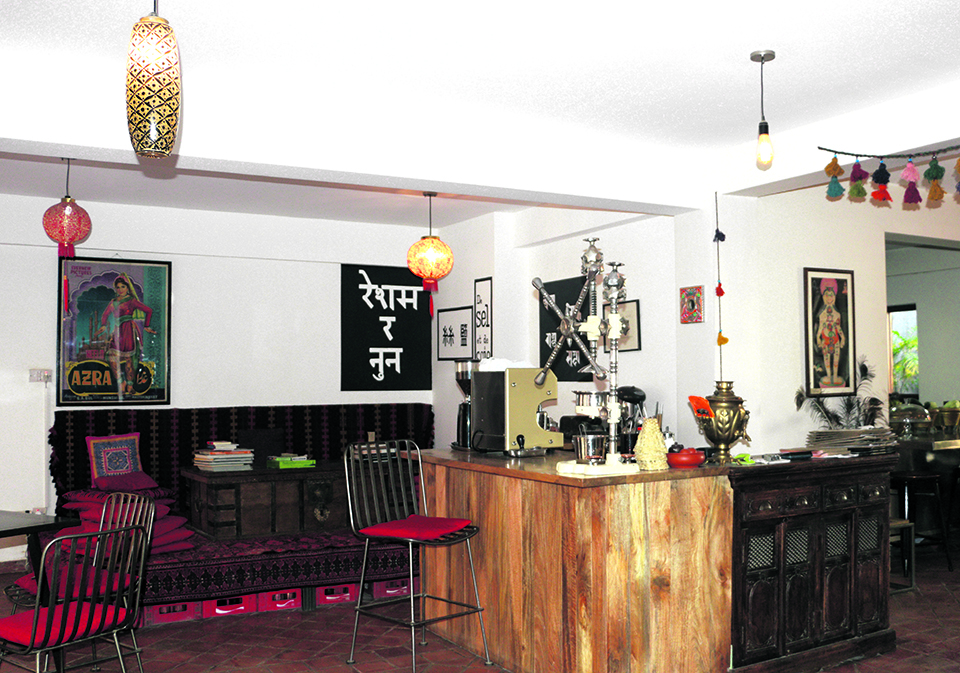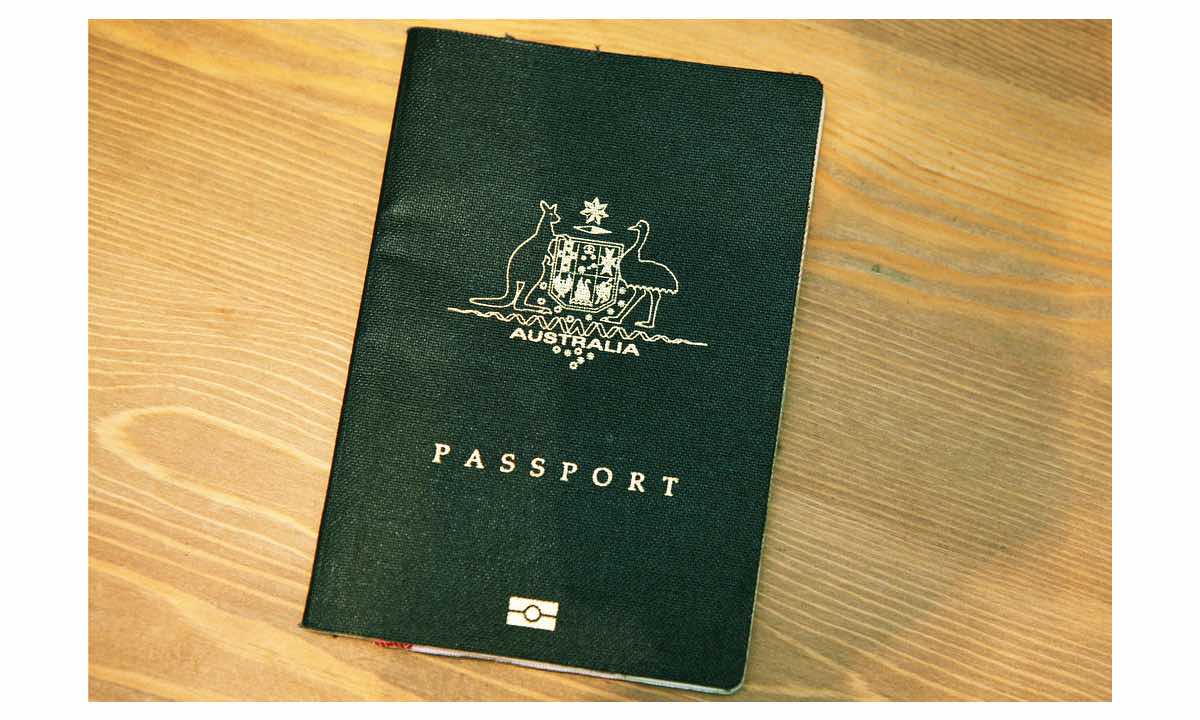
OR

Jerome Imstepf and Anne Chassaing are the couple behind the recently launched business venture Of Silk and Salt. The couple had visited Nepal for the first time in 2006 while they were working on a project conducted by the International Committee of the Red Cross (ICRC) and in May last year (2018) they decided to launch three businesses – a multi cuisine restaurant, a garment and lifestyle shop, and a guest house – all under the branding Of Silk and Salt.

“We thought the name Of Silk and Salt would represent our brand perfectly because Nepal is at the heart of both the silk road and salt trade. The silk in our name is also a reference to the clothing business while the salt refers to the restaurant,” explains Imstepf. He and Chassaing have also visited most countries from these two routes – silk road and salt trade – either for some work related project or for vacation and have included charming trinkets from these travel escapades to their businesses.
The reason why Imstepf and Chassaing have included multiple businesses as a part of Of Silk and Salt is because prior to coming to Nepal last year, they weren’t exactly sure what kind of business would work out for them here. Imstepf states that both he and Chassaing are interested in a variety of areas and they learned about different kinds of businesses and subjects during their research period. After coming to Nepal and assessing the Nepali market (as well as understanding the laws regarding businesses foreigners are allowed to run in Nepal), they finalized on launching their three current businesses.
Both tourists and locals seem to frequent Of Silk and Salt. Imstepf believes that because they are located near Patan Durbar Square – one of the most popular tourist hotspots in Lalitpur – their shop manages to catch the attention of a lot of tourists. Meanwhile, most Nepalis visit Of Silk and Salt to try out their dishes. The restaurant menu has incorporated a bunch of dishes from a lot of the countries Imstepf and Chassaing have visited in the past including Lebanon, Thailand, Turkey, Middle East, etc. The couple actually put together the menu themselves and has modified a few of their dishes (inspired from the cuisines of different countries) by swapping out ingredients that aren’t available in Nepal for local and seasonal produce.
“Our main objective behind launching Of Silk and Salt is to help change the lives of the people we work with,” says Imstepf adding that neither him nor Chassaing are very interested in making huge profits from the businesses. But Imstepf also emphasizes the fact that their business isn’t a charity as they believe teaching people skills that can be used to earn a living is valuable. Currently the Of Silk and Salt team has seven Nepali individuals working alongside Imstepf and Chassaing.
The Of Silk and Salt team also tries its best to use local products made in Nepal for all of its operations. Imstepf states that this way the company will be helping other local brands and manufacturers around Kathmandu to sustain their businesses as well. But he also admits that this isn’t always possible. The team buys a few fabrics either from India or China for some of their products because a lot of the time they can’t find variety in print and color in fabrics of good quality in Nepal.
Some Of Silk and Salt products also utilize fabrics bought by Chassaing and Imstepf years ago during some of their travels. They also upcycle old silk saris from India and fashion them into dresses, shirts, t-shirts and tops inspired by the design of Kimonos. They also have cushions, clutches and book covers – all designed by Chassaing and made at their workshop.
The guesthouse of Of Silk and Salt is located a few houses away from the building that houses their restaurant and garment shop. Imstepf reveals that they rent out rooms on the first and second floors to their guests and live on the third floor themselves. All the rooms at the guesthouse are also decorated fetchingly with artsy knick knacks the couple has collected while traveling and, more often than not, all of these decor items either showcase the culture of the country they were made in, have a rich history of their own or have emotional connection with either Imstepf or Chassaing or both.
Although Imstepf isn’t sure what turns and changes Of Silk and Salt will go through in the future, he mentions that their prime objective will be to make this brand self sustainable. “We’re pretty happy with the working and operations of Of Silk and Salt right now. Everything is running according to our principles and we will do our best to do the same in the future as well,” he concludes.
You May Like This

Complete education, full health could double Nepal's GDP per capita: WB
KATHMANDU, June 7: Nepal has the potential to double its Gross Domestic Product (GDP) per capita in the long run if... Read More...

German NGOs keen about extending support to technical education in Nepal
KATHMANDU, Sept 14: Various Non-Government Organizations (NGOs) in Germany have expressed their interest to extend support to promote technical education in... Read More...

Market tumbles as insurance, energy stocks falter
KATHMANDU, Sept 2: Stocks began September on a weak note as the local bourse struggled throughout the trading session on... Read More...



_20240508123602.jpg)
Just In
- 27 people die in incidents of fire, forest fire and lightning in last 24 days
- Fake license distribution case: Former computer operator at DoTM arrested
- Tax administrators and experts from 16 countries gather in Nepal for regional technical meeting of ATI
- MP Nembang identifies three priorities for Ilam after taking oath
- JSP Chairman Yadav holds press conference, accuses unlawful party split while abroad
- Renowned singer Menuka Paudel undergoes eye surgery
- Sunkoshi-Marin Diversion achieves breakthrough
- Youth dies after jumping of one-story rehabilitation center building















Leave A Comment